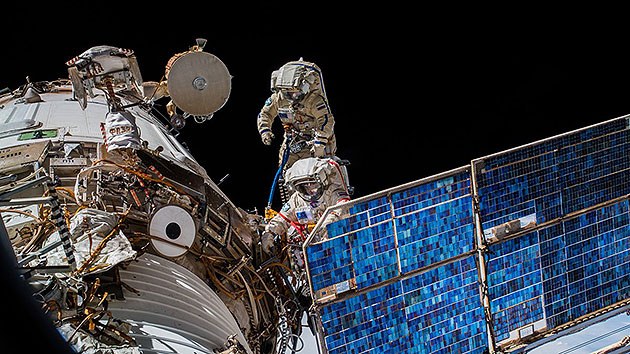Nocturnal thrills – a tale of an EVA, live from Moscow

It is 01:28 on 16 August 2018, and applause has suddenly broken out in the MCC-M, the Russian control centre for the International Space Station (ISS). The room is full of happy faces. The ICARUS antenna, which will be used to track animals from space, has just been successfully installed on the exterior of the Russian Zvezda module on the ISS.
I have been sitting with the MCC-M staff since 16:00. Following a preliminary discussion among the project engineers, the extra-vehicular activity began around 19:00. This is how it went: The cosmonauts first install a mast before connecting a number of cables. Thanks to their helmet cameras, we are able to directly witness how one of the cosmonauts tries to connect two plugs. The forehead of the systems engineer is beaded with sweat. It soon becomes apparent that one of the ends is wrong. Once the right part is found, the connection works.

The cosmonauts return to the airlock to fetch the antenna. On Earth, this weighs 120 kilograms, but in space it is weightless. Nonetheless, transporting the bulky package to the installation site takes longer than expected. After mounting the apparatus on the mast and laying more cables, it is time for the crowning moment: the unfolding of the antenna. By this time, the two men have been working in space for over five hours. Ironically, the Sun is now setting, so it will be a while before we can see the newly-installed antenna on the ISS in all its glory.
But now the German-Russian ICARUS research project can really get under way!
Tags:
